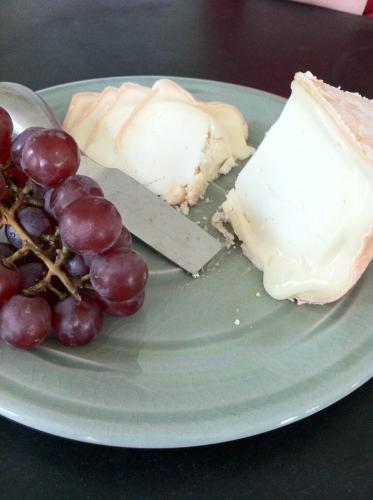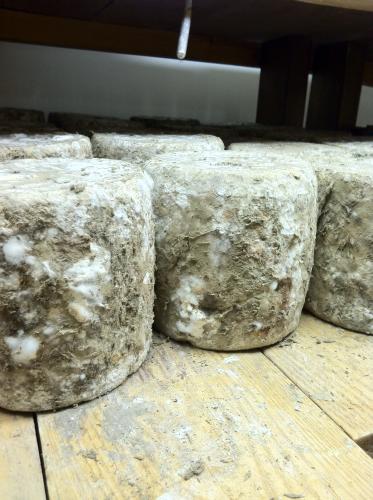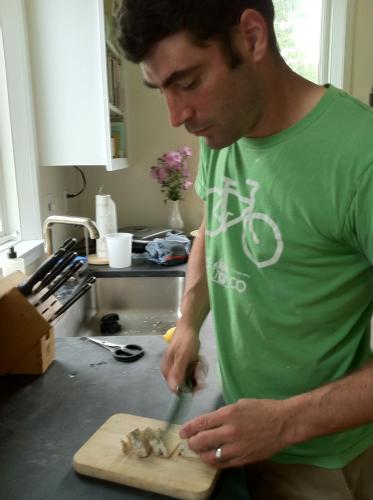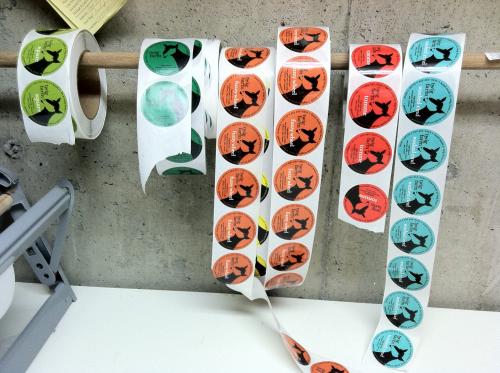The Ledges of Twig Farm
We gathered in the kitchen at Twig Farm in West Cornwall to taste their cheeses on a recent morning while the goats grazed just out the window.
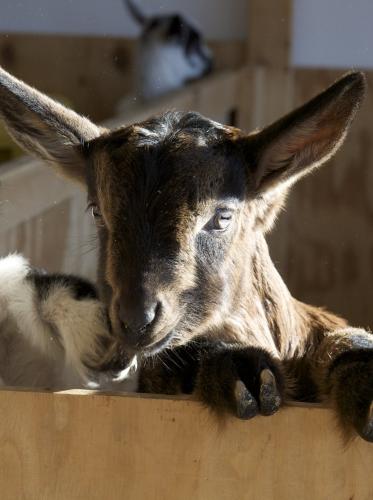
A baby Alpine goat at Twig Farm
As we were rolling these creamy bites around on our tongues, we were tasting the synergy of the bedrock (shallowly sticking up out of the pastures just out the window), the pasture grasses, the Alpine goats grazing them on this warm June afternoon, and the magic of time and chemistry that happened in the cheese cellar literally below our feet in the basement of the farmers’ house.
A piece of Twig Farm Washed Rind Wheel
In France, this concept - the influence of a physical location on a food - is described using concepts of “terroir”, translated as ‘taste of place’. Terroir is the reason that true Champagne can only be produced in the Champagne region of France while Parmigiano-Reggiano cheese can only be produced in Northern Italy.
Aging Twig Farm Goat Tomme in the cellars of the farm.
Farming the land for the last 7 years, farmers Michael Lee and Emily Sunderman have noted the dynamic nature of the terroir of their cheeses.
Michael slices Twig Farm Goat Tomme for sampling
The flavors in their cheese shift with the season as well as the stage of the goats’ lactation. Just after the kids are born in February, a mother goat’s milk is very high in fat. After three weeks, the milk fat drops and drops still further as spring comes and the goats are let out on pasture. From there the flavors in the milk shift with the botany of the pasture.
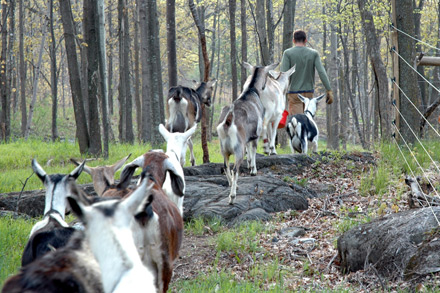
The Ledges of Twig Farm
The ledges of Twig Farm have a big influence here - the shallow bedrock makes it challenging to mow the pasture and creates micro-climates fostering a wide diversity of plant species which, in turn, impart a complexity of flavors in the milk and ultimately the cheese.
Early in the season the goats are eating lots of grass, dandelions, and chicory. As the season pushes toward fall, goldenrod makes up much of their diet. At times, when the goats are browsing on clover, the milk tastes like green beans. Michael told of one night the goats were under a stand of pines – the next morning they came in smelling like incense. All these flavors end up in the milk so producing a consistent cheese as the season fluctuates is impossible.
Twig Farm Goat Tomme
Michael and Emily can vary factors in their cheese making (including stirring time, the starter culture, the temperature, and the size of the curds) to attempt to produce a consistent cheese, but ultimately depend on having customers interested in tasting cheeses so closely tied to the land and fascinated by their variability.
Poetically, I love the idea that the soil and the shallow bedrock impart flavor to the milk. The milk becomes cheese but then goes below ground for a second time to age in the cellar. This full cycle, from soil-to-soil, brings depth and complexity to our relationship with the land and the food we produce in partnership with it.
Like the ephemeral flavors, Twig Farm's cheeses shift quickly into and out of our cheese case so get them while they’re here.
Cheese stickers waiting for the next batch to come out of the cave.
